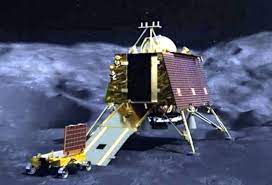On Thursday, the Indian Space Research Organisation (ISRO) provided the most recent details on the Chandrayaan 3 project. The organisation stated that all activities are progressing as anticipated, and that all systems are running well.
The Lander Module’s payloads, which include ILSA, RAMBHA, and ChaSTE, have been activated, according to the announcement made by the space agency today, barely one day after the historic launch. In addition to this, it was stated that the Pragyan Rover’s mobility operations had already begun.
In addition, according to the agency, the SHAPE payload that was aboard the Propulsion Module was turned on over the weekend.
The Chandrayaan-3 mission’s schedule in greater detail
The following is a comprehensive timeline of all the developments that have occurred in the Chandrayaan 3 mission up until the present day.
• On July 6, the Indian Space Research Organisation (ISRO) announced that the launch date for Mission Chandrayaan-3 will be on July 14 from Sriharikota’s second pad.
• On July 7, the electrical tests performed on the vehicles were completed successfully.
• On July 11, a comprehensive “Launch Rehearsal” that simulated the complete launch process for 24 hours comes to a successful end.
• On July 14, the Chandrayaan-3 spacecraft is placed into its assigned orbit by the LVM3 M4 vehicle.
• On July 15, the first attempt at lifting the orbit was successful, and it was able to attain a 41762 km x 173 km orbit.
• On July 17, the second manoeuvre to raise Chandrayaan-3’s orbit places it at 41603 kilometres by 226 km.
• The fourth orbit-raising manoeuvre was completed on July 22, putting the spacecraft into a 71351 km x 233 km orbit.
• Another successful orbit-raising manoeuvre was completed on July 25.
• On August 1, Chandrayaan-3 was launched into a translunar orbit at a distance of 288 kilometres and 369328 km.
• On August 5th, a successful insertion into lunar orbit was accomplished (164 kilometres by 18074 km).
• On August 6, the moon’s orbit was adjusted to be 170 kilometres by 4,313 kilometres.
• On August 9, ISRO will carefully adjust the trajectory of the spacecraft so that it would orbit the moon at a lower altitude. It has reached a lunar orbit that is 174 kilometres wide and 1437 kilometres long.
• On August 14, Chandrayaan-3 completes another controlled manoeuvre that brings it into an orbit of 150 kilometres by 177 kilometres above the surface of the moon.
• On August 16, the Indian spacecraft successfully completes the fifth and final Moon-bound manoeuvre, which places it in a nearly circular Lunar orbit with a distance of 163 and 153 kilometres.
• On August 17, the landing module, which includes both the Vikram lander and the Pragyan rover, is disengaged from its associated propulsion system.

• On August 18, Chandrayaan 3 successfully performed a ‘deboosting’ operation, which resulted in a reduction in the size of its orbit to 113 kilometres by 157 kilometres.
• On August 20, Chandrayaan-3 performed the final correction to its orbit, bringing it closer to the moon by around 25 kilometres, bringing the distance between it and the moon to approximately 134 kilometres.
• On the 23rd of August, the targeted touchdown was successfully accomplished.
What kinds of payloads are carried by the Pragyan rover, the Vikram lander, and the propulsion module?
The spectro-polarimetry of Habitable Planet Earth (SHAPE) payload is housed within the propulsion module. Its purpose is to investigate the spectral and polari ometry measurements of Earth as seen from the lunar orbit.
Lander payloads include: the Instrument for Lunar Seismic Activity (ILSA) for monitoring seismicity surrounding the landing site; the Langmuir Probe (LP) for estimating the plasma density and its changes; and Chandra’s Surface Thermophysical Experiment (ChaSTE) for measuring the thermal conductivity and temperature. For research on lunar laser ranging, NASA has provided a passive Laser Retroreflector Array that can be housed here.
Payloads on the Rover include an Alpha Particle X-ray Spectrometer (APXS) and a Laser Induced Breakdown Spectrometer (LIBS), both of which are designed to determine the elemental make-up of the area immediately surrounding the landing site.


